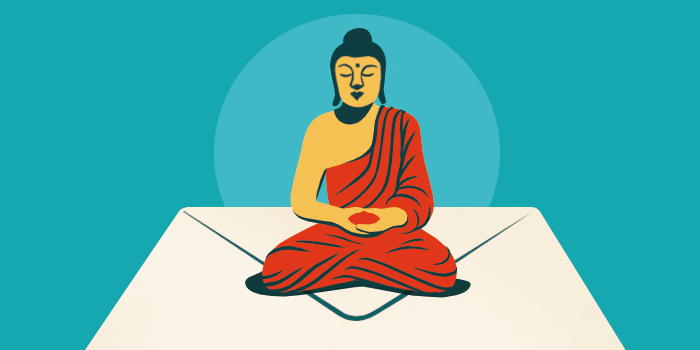Why do people become monks and nuns?

Burmese monks accept food offered by a laywoman on their daily alms round. | Hemis / Alamy Stock Photo
Many Buddhists who join a monastic community do so because it offers a life of immersion in the dharma. For some this is an ideal environment for long hours of uninterrupted meditation and study. It also is seen as an opportunity to help others, serve one’s community, and protect and maintain the religion for future generations. Some Theravada Buddhists believe one cannot realize enlightenment without maintaining monastic vows, while Mahayana Buddhists believe laypeople also can realize enlightenment; but nearly all agree monastic life is more conducive to awakening. The process of taking monastic vows, called “going forth” or “home leaving,” echoes the Buddha’s decision to leave his opulent life to find liberation from suffering as a wandering seeker. “Household life is confining, a realm of dust,” the Buddha said. “Going forth is the open air.”
Cultural, economic, and practical considerations can come into play as well. Some Buddhist traditions believe that joining the monastic order accumulates merit for monastics as well as their families. It’s customary in Thailand, for example, for young men to ordain for a short time, in part to make merit. Still others ordain to gain access to education, food, and housing, especially children; to atone for past misdeeds; or to fulfill their family’s wishes.
One key reason Buddhists take monastic vows is to live a life of renunciation. The Sanskrit word naiskramya (Pali nekkhamma), usually translated as “renunciation,” literally means “freedom from sensual lust.” It signifies giving up worldly pleasures and whatever else binds us to suffering. The Buddha taught that when students fully appreciate how desire and clinging bind them to unhappiness, renunciation becomes an act of liberation. The earliest Buddhist monks and nuns renounced their worldly lives and possessions and walked from village to village, offering teachings and receiving alms. Leaving behind everything familiar and comfortable was a means to help the disciple be freed from desire, craving, and grasping.
Some schools of Buddhism have developed paths of practice for laypeople that incorporate elements of monastic practice but are still compatible with lay life. For instance, the Vipassana, or Insight Meditation, movement, whose roots go back to 19th-century Burma, popularized a meditation formerly practiced only by elite monastics. But though laypeople now have access to more practices, many still feel compelled to make a total commitment to the dharma by going forth on the traditional monastic path.

Tricycle is more than a magazine
Gain access to the best in sprititual film, our growing collection of e-books, and monthly talks, plus our 25-year archive
Subscribe now